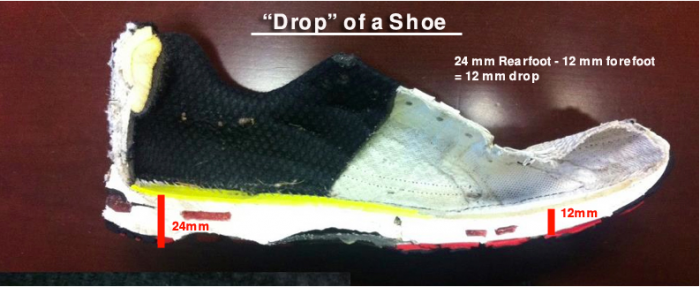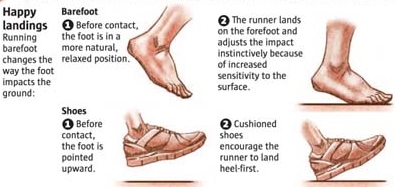Running
Running is a skill.
Something inherent to our nature, it oftentimes gets neglected in terms of form and efficiency. Just run, right? Put one foot in front of the other and go. But like any physical movement, there is an efficient way to run.
Funny thing is, we have enabled ourselves to become bad runners.
With the development of flashy running shoes and fancy adjustable treadmills, ironically we're going no where fast. Sure, we have the toys, but they've made us soft. We've become virtual thumb-sucking, spoiled little kids, crying for more dessert. In the last 100 years especially, we have put more cushion to our running than anything we'd truly come across in nature. A nice silky blanket for our feet. Which means as 21st century adults we run slower than diaper-butt toddlers.
No wonder people hate to run.
It comes out at times with a whiny tone and a pouty face. When pushed to run fast or in finding out that running is part of the daily workout: "Ohh... I hate running."
I generally shoot back, sarcastically, "That's probably because you're not good at it."
Nine times out of ten, this is true. Yeah, sure... there are people who are naturally talented runners and still don't like it very much. But in general, if you hate a physical movement it's because you don't excel at it.
Despite all the hatred, somewhere around 36 million people run every year. 40-50% experience at least one injury. So what's to blame?
In this three part series on "Running," we'll examine footwear, form & efficiency, and programming.
Part 1: Footwear
If we first look at evolution, running was highly necessary to stay away from predators or in the hunt for food. Centuries after that it became a means of transmitting valuable information when animals weren't available. And now, centuries after that, it is merely part of sport and competition, or a means to stay fit.
Most recently in that evolution, we decided to pad our precious feet for protection.
Sticks and stones may hurt my feet, but shoes will always haunt me.
Because, with the push for fitness, jogging became a craze. At least in America. Interestingly, many civilizations of the world haven't actually experienced the issues with running like some of the developed countries. They've been endurance running as part of life for generations with very little injury or overtraining. Think about it... "Jogging" as a term even denotes slow, methodical running. More on this in Part 3.
For Americans, it wasn't just Track or Cross Country competitions like we saw for years in the Olympics or in high school and college sports. This was now for prolonged exercise. Aerobic training for the masses. And the footwear prompted by this movement allowed people to do things while running that no person could ever do barefoot.
Heel plant. Land heavily. Shock the joints with shitty form. This making sense?
Shoes allowed many things to remain less than ideal: muscle imbalance, poor landing, inefficient stride... all to never improve.
No pain, no gain, right? Wrong. Just as bad as work shoes, running shoes were now changing our natural mechanics too.
In essence, the absorption of force sounds scientific and useful, but has ruined our innate development as human runners. Well, that and the fact that after not running for years, many adults pick it up without that inherent development at a weekly mileage that causes overuse injuries. And then people either look for more padded footwear or stop running altogether.
Since realizing this, the running society has moved back towards a shoe structure that mimics barefoot running and natural physical movement. In fact, Google search barefoot running, minimal footwear, or even CrossFit, and you'll get a slew of brand names that will put you closer to the ground. "Zero Drop" is a hot term right now, which you may already know. But going barefoot or wearing a zero drop shoe probably isn't the best for a runner putting in even just a few miles each week if they haven't been truly running like that since childhood.
This is why footwear begs to be discussed, at least briefly, in looking at the topic of running-- because of its impact on efficiency.
The bad news: going into minimal footwear after years of cushioned running shoes can be equally problematic. It will be shocking to the system, so a gradual move is smarter. If you switch from a supportive shoe to a minimalist shoe and keep running like nothing has changed, you'll probably just get hurt. This is where Part 2 and Part 3 will come into play.
The good news: it really isn't that complicated to find a shoe that works. If one doesn't feel good, move to another. Read up, take advice from people who are runners (not just salesmen pitching the most expensive shoe on the market), and test them out.
While there is not one perfect shoe or brand name that I can suggest to everyone in internetland, here are a few places to start. From a more cushioned shoe to a very minimal one, at least at this point in time. These are just links for pictures and quick write-ups, not necessarily the cheapest deal out there. And who knows how long the links will be active.
Minimalist Running Shoe Options:
Nike: Believe it or not, the Nike Free is actually one of the more cushioned "minimalist" shoes out there. They're just great at marketing. Men's. Women's.
Newton: A more expensive product, Newton boasts less overuse injuries with their patented technology. However, these are still very cushioned. Men's. Women's.
Reebok: Typically more of CrossFit shoe, the Nanos offer a little more cushion than the shoes below but do have a small heel drop in comparison to their "normal" running shoes. Men's 2.0. Women's 2.0. Men's 3.0. Women's 3.0.
Inov8: Marketed as more of a cross trainer, these came out with critical support especially in the CrossFit community and are an option when running too. Unisex sizing. F-Lite 232. F-Lite 195. Bare-XF.
New Balance: A great go-to for minimalist shoes, they developed their Minimus and improved it over the years. Generally a place I send people who are looking for a natural shoe, there are quite a few choices in terms of style and heel drop. Road Men's. Road Women's. Trail Men's. Trail Women's. Zero Drop Men's. Zero Drop Women's.
Merrell: Similar to the New Balance, Merrell offers a minimalist series they call "Barefoot." Road Men's. Road Women's. Trail Men's. Trail Women's.
Vibram: Those ugly toe-shoes that make people stop and stare, Vibram hit it big and then went through lawsuits for unsubstantiated claims. These are extremely minimal; basically rubber socks, and prove the answer isn't to go completely "barefoot" because that can be injurious itself.
Of course this is not an exhaustive list. Check hundreds of reviews at the NaturalRunningCenter.com and BarefootRunningShoes.org for more extensive listings, including other brands not mentioned above. Plus, many experts and running organizations provide info that may be worthwhile in articles such as "Should I Run Barefoot?" and "How to Prepare for Barefooting."
So there you have it. An initial look into the footwear of the old yet ever-evolving sport of running.
Looking ahead to "Running, Parts 2 & 3," we'll examine common mistakes and technique fixes in form & efficiency and then implementing running workouts in programming.
In other words, we drop the pacifier, learn how to run, and have some fitness for dessert.
-Scott, 7.29.2013




